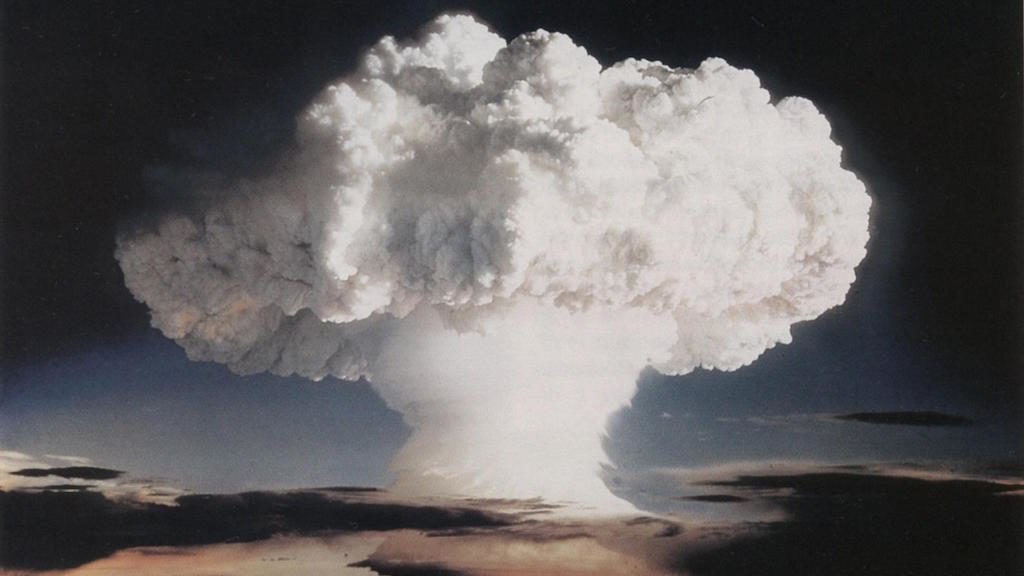
© Wikimedia Commons“Ivy Mike” atmospheric nuclear test, taken in November 1952.
The overdrawn game of nuclear chicken between the USSR and the United States—now known as the Cold War—lasted
about 45 years. While neither superpower ever deployed nukes on each others' soil, high-altitude bomb testing caused a kerfuffle in Earth's atmosphere.
Though the conflict has (thankfully) long since ended, newly declassified information suggests it might have impacted space weather in ways we never anticipated.According to a new paper
published in
Space Science Reviews, the high altitude nuclear testing conducted by both the USSR and United States created "artificial radiation belts" near Earth. Our planet is naturally surrounded by Van Allen radiation belts—zones of highly-charged particles. But the energy from nuclear explosions created hot, electrically charged regions within the atmosphere that induced geomagnetic disturbances, and even produced radiation belts of its own. As you can probably guess, the results were not so great—according to the
study's authors, this resulted in "major damages to several satellites" that orbited Earth at a fairly low altitude.
Radiation and high-energy particles from the Sun frequently interact with Earth's geomagnetic field, in the phenomenon known as space weather. When enough of these high energy particles rain down on the magnetosphere, it can severely
damage communications satellites and even electrical power grids on the ground. But the radiation from nuclear blasts in the '60s is an extreme example of how humans can also fuck with our geomagnetic field, which is salient to understand but also terrifying.
Seriously, who would have guessed that missions with names like Argus, Teak, and Starfish would have this kind of an impact? The
radiation released from Argus alone caused an flurry of geomagnetic storms over Sweden and Arizona, according to the new study.
"The tests were a human-generated and extreme example of some of the space weather effects frequently caused by the sun," study's co-author Phil Erickson, an assistant director at MIT's Haystack Observatory, told
NASA. "If we understand what happened in the somewhat controlled and extreme event that was caused by one of these man-made events, we can more easily understand the natural variation in the near-space environment."
By understanding how human-caused geomagnetic disturbances impact our atmosphere, space agencies hope to better understand how to protect astronauts in Low Earth Orbit from the impacts of space weather, too. Maybe studying artificial space weather can even shed light on how a future
monster solar storm will impact our electric grids and technology.
Also, hopefully we can calm down with the nukes here on Earth's surface.
Also, is climate change a scapegoat for this insanely criminal endeavour that is affecting us all? Could it be that simple..?
[Link] Time-Lapse Map of Every Nuclear Explosion Since 1945